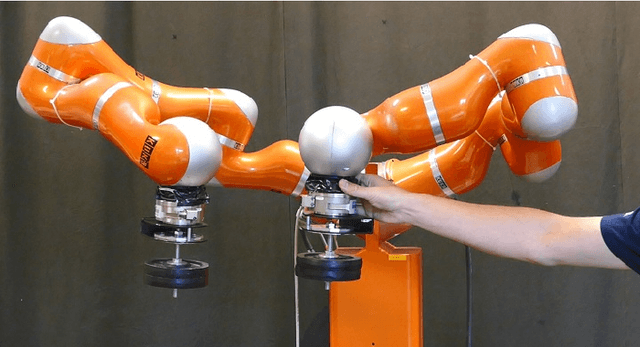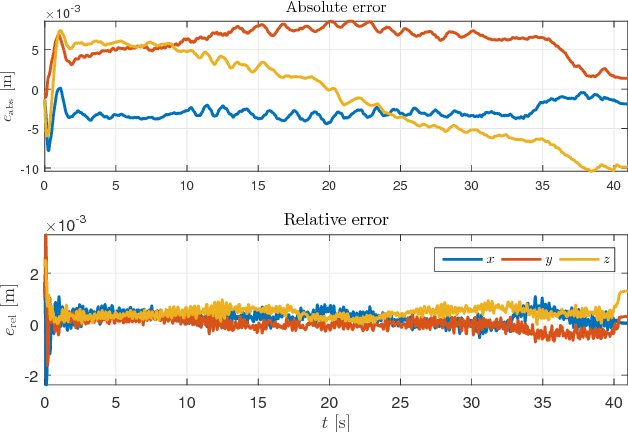Bojan Nemec
Neural Dynamic Movement Primitives -- a survey
Aug 03, 2022Abstract:One of the most important challenges in robotics is producing accurate trajectories and controlling their dynamic parameters so that the robots can perform different tasks. The ability to provide such motion control is closely related to how such movements are encoded. Advances on deep learning have had a strong repercussion in the development of novel approaches for Dynamic Movement Primitives. In this work, we survey scientific literature related to Neural Dynamic Movement Primitives, to complement existing surveys on Dynamic Movement Primitives.
Compliant Movement Primitives in a Bimanual Setting
Jul 14, 2017



Abstract:Simultaneously achieving low trajectory errors and compliant control \emph{without} explicit models of the task was effectively addressed with Compliant Movement Primitives (CMP). For a single-robot task, this means that it is accurately following its trajectory, but also exhibits compliant behavior in case of perturbations. In this paper we extend this kind of behavior without explicit models to bimanual tasks. In the presence of an external perturbation on any of the robots, they will both move in synchrony in order to maintain their relative posture, and thus not exert force on the object they are carrying. Thus, they will act compliantly in their absolute task, but remain stiff in their relative task. To achieve compliant absolute behavior and stiff relative behavior, we combine joint-space CMPs with the well known symmetric control approach. To reduce the necessary feedback reaction of symmetric control, we further augment it with copying of a virtual force vector at the end-effector, calculated through the measured external joint torques. Real-world results on two Kuka LWR-4 robots in a bimanual setting confirm the applicability of the approach.
 Add to Chrome
Add to Chrome Add to Firefox
Add to Firefox Add to Edge
Add to Edge